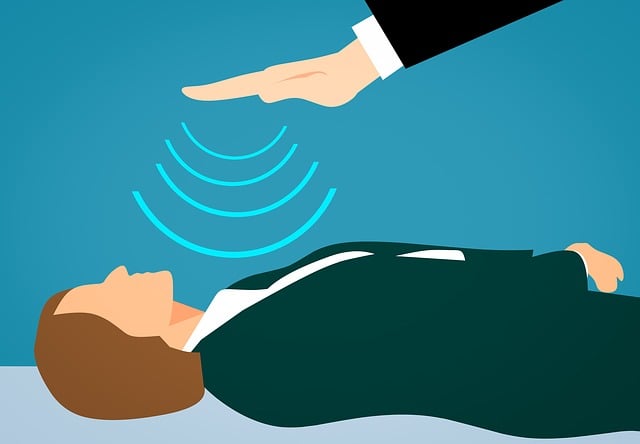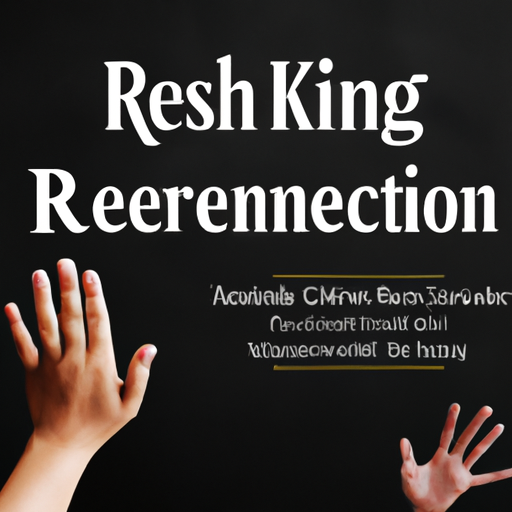
When it comes to the practice of Reiki healing, have you ever wondered if there are any limitations? While Reiki is renowned for its ability to promote relaxation and balance in the body, mind, and spirit, it’s important to explore whether there are any restrictions to its healing potential. In this article, we’ll dive into the topic of Reiki healing and discuss any possible limitations you may want to consider.
Reiki is a holistic healing practice that originated in Japan and is now practiced worldwide. It involves the channeling of universal life energy to promote healing and well-being. Many people have experienced profound benefits from Reiki, including reduced stress, enhanced mental clarity, and improved physical health. However, like any healing modality, Reiki does have its limitations. In the following paragraphs, we’ll explore these limitations further and provide you with a better understanding. So, let’s dive in and discover more about the potential limitations of Reiki healing!

What is Reiki Healing?
Reiki healing is a holistic practice that originated in Japan in the early 20th century. It is based on the idea that there is a universal life force energy that flows through all living things. This energy can become blocked or imbalanced, leading to physical and emotional disharmony. Reiki practitioners use their hands to channel this energy and direct it to the recipient, promoting a sense of relaxation, balance, and healing.
The word “Reiki” is derived from two Japanese words – “Rei,” which means universal, and “Ki,” which means life force energy. It is believed that by tapping into this universal energy and allowing it to flow freely, the body’s natural ability to heal itself is enhanced.
Definition of Reiki Healing
Reiki healing is a non-invasive, gentle therapy that promotes healing on physical, emotional, mental, and spiritual levels. It is a complementary approach that can be used in conjunction with conventional medical treatments to support overall well-being. The practice of Reiki involves a Reiki practitioner placing their hands either directly on or slightly above the recipient’s body, allowing the energy to flow through them and into the recipient.
How Reiki Healing Works
The exact mechanism of how Reiki healing works is not yet fully understood. However, it is believed that the energy transferred during a Reiki session helps to remove energy blockages, balance the body’s energy centers (chakras), and stimulate the body’s natural healing responses.
During a Reiki session, the recipient remains fully clothed and lies down on a treatment table or sits comfortably in a chair. The practitioner then places their hands on various parts of the recipient’s body, focusing on areas where there is pain, tension, or imbalance. The Reiki energy is said to flow through the practitioner’s hands and into the recipient’s body, promoting a sense of deep relaxation and healing.
Types of Reiki Healing
There are several different types of Reiki healing, each with its unique focus and techniques. Some of the most common types include:
Traditional Usui Reiki
Traditional Usui Reiki is the original form of Reiki healing that was developed by Mikao Usui in Japan in the early 20th century. It follows a set of specific hand positions and techniques for channeling energy.
Karuna Reiki
Karuna Reiki is a more advanced form of Reiki healing that focuses on compassion and healing on a deeper level. It incorporates additional symbols and techniques to promote emotional healing and spiritual growth.
Kundalini Reiki
Kundalini Reiki is a powerful form of Reiki healing that aims to awaken the dormant Kundalini energy at the base of the spine. It uses specific techniques to raise this energy and promote spiritual transformation.
Benefits of Reiki Healing
Reiki healing offers a wide range of potential benefits for individuals seeking physical, emotional, and spiritual healing. Some of the main benefits include:
Physical Healing
Reiki healing can help to alleviate physical symptoms and promote the body’s natural healing process. It is commonly used to reduce pain, inflammation, and muscle tension, as well as to support recovery from injuries or surgeries.
Emotional Healing
Reiki healing can also have a profound impact on emotional well-being. It helps to release emotional blockages, reduce stress and anxiety, and foster a sense of inner peace and calm. Many people report feeling lighter, more balanced, and more connected to their emotions after a Reiki session.
Stress Reduction
In today’s fast-paced world, stress has become a common problem that affects both physical and mental health. Reiki healing helps to activate the body’s relaxation response, inducing a state of deep relaxation and reducing stress levels. This, in turn, can lead to improved immunity, better sleep, and increased overall well-being.
Improved Sleep
For those struggling with sleep issues, Reiki healing can be incredibly beneficial. By promoting deep relaxation and balancing the body’s energy, Reiki helps to calm the mind and prepare the body for a restorative night’s sleep. Many individuals report experiencing more restful sleep and fewer sleep disturbances after receiving Reiki treatments.
Real-Life Experiences of Reiki Healing
To understand the potential of Reiki healing, let’s explore a couple of real-life case studies showcasing its efficacy:
Case Study 1: Overcoming Chronic Pain
Mary, a 45-year-old woman, had been suffering from chronic back pain for several years. Despite trying various conventional treatments, her pain persisted and greatly affected her daily life. Desperate for relief, Mary decided to try Reiki healing as a last resort.
After a few sessions, Mary noticed a significant reduction in her pain levels. She felt a sense of relaxation and warmth during the treatments, and the pain gradually subsided. Over time, the regular Reiki sessions helped Mary manage her pain more effectively, allowing her to regain control of her life and engage in activities she had previously given up on.
Case Study 2: Managing Anxiety and Depression
John, a 35-year-old man, had been struggling with anxiety and depression for many years. He had tried various medications and therapies but still found it challenging to manage his symptoms. Seeking an alternative approach, John turned to Reiki healing.
During Reiki sessions, John experienced a deep sense of peace and calm. He found that the gentle energy flowing through him helped to ease his anxious thoughts and lift his mood. As he continued with regular Reiki treatments, John noticed a significant improvement in his overall mental well-being. He felt more hopeful, resilient, and capable of managing his anxiety and depression.

Are There Any Scientific Studies on Reiki Healing?
While Reiki healing has been practiced for decades and has gained a significant following, scientific studies exploring its efficacy are still limited. The existing research on Reiki healing is predominantly qualitative, focusing on individuals’ subjective experiences rather than quantifiable outcomes.
Review of Existing Research
A comprehensive review of existing studies on Reiki healing published in the International Journal of Behavioral Medicine found positive trends in pain reduction, relaxation, and improved well-being among recipients of Reiki treatments. However, the review emphasized the need for more rigorous, controlled studies to establish a stronger scientific foundation for Reiki healing.
Potential Limitations in Conducting Studies
Conducting scientific studies on Reiki healing presents several challenges. One of the main obstacles is the difficulty in creating a placebo or sham treatment that convincingly mimics Reiki. Since Reiki is a subtle, energetically-based therapy, it can be challenging to design a credible control group that adequately simulates the effects of Reiki healing.
Additionally, the subjective nature of Reiki healing, involving the transfer of energy and the practitioner’s intuition, makes it challenging to measure and quantify its effects. Scientific studies often rely on quantifiable data and statistical analysis, which may not fully capture the subjective experiences and nuances of Reiki healing.
Understanding the Limitations of Reiki Healing
It is essential to understand the limitations of Reiki healing to approach it as a complementary therapy rather than a stand-alone solution.
Reiki as a Complementary Therapy
Reiki healing should be seen as a complementary therapy that supports and enhances conventional medical treatments rather than a replacement for them. It can be used alongside other therapies to promote holistic healing and well-being.
Not a Replacement for Medical Treatment
Reiki healing, while beneficial for many individuals, is not a substitute for medical treatment. It should not be used as the sole treatment for serious medical conditions. If you have a health concern, it is essential to consult with a qualified healthcare professional for a proper diagnosis and appropriate medical treatment.
Varied Responses and Efficacy
The effectiveness of Reiki healing can vary between individuals. Some people may experience immediate relief and noticeable improvements, while others may require more sessions or have a less significant response. Factors such as the recipient’s receptivity to Reiki, their belief in the therapy, and the practitioner’s skill and experience can influence the outcome of the treatments.

Personal Factors Influencing Reiki Healing
Several personal factors can influence the effectiveness of Reiki healing:
Receptivity and Belief in Reiki
Having an open mind and a willingness to receive Reiki healing can enhance its effects. Belief in the therapy and its potential can create a positive mindset that supports the healing process.
Practitioner’s Skill and Experience
The skill and experience of the Reiki practitioner can impact the quality and effectiveness of the treatments. A qualified and experienced practitioner will have a deep understanding of Reiki principles and techniques, ensuring that the energy is channeled and directed effectively.
Safety Concerns and Precautions
Reiki healing is generally considered safe and non-invasive. However, it is essential to approach it with caution and take certain precautions:
Effectiveness Varies Between Individuals
As mentioned earlier, the effectiveness of Reiki healing can vary between individuals. It may not work for everyone or produce the same results. It is important to approach Reiki with realistic expectations and an understanding that the outcomes may differ for different individuals.
Possible Healing Crisis
During the course of Reiki healing, some individuals may experience a “healing crisis.” This refers to a temporary exacerbation of symptoms or emotional release as the body begins to heal itself. It is a normal part of the healing process, but it can sometimes be uncomfortable or overwhelming. A skilled Reiki practitioner can guide individuals through these experiences and provide support.
Importance of Communication with Practitioner
Effective communication with the Reiki practitioner is crucial to ensure that the treatments address your specific needs and concerns. It is important to discuss any underlying medical conditions, medications, or previous treatments to ensure that Reiki healing is safe and suitable for you.
Considering Reiki Healing as a Complementary Option
If you are considering Reiki healing as a complementary option for your overall well-being, it is important to approach it in a thoughtful and informed manner. Here are some key considerations:
Collaboration with Healthcare Professionals
It is important to maintain open communication with your healthcare professionals and include them in your decision to explore Reiki healing. They can provide guidance, offer insights, and help ensure that Reiki is integrated safely and effectively with your existing treatments.
Integrating Reiki with Conventional Treatments
Reiki healing can enhance the effectiveness of conventional medical treatments and support the body’s natural healing abilities. It is crucial to view Reiki as a supplement to, rather than a replacement for, medical treatments.
Finding a Reputable and Qualified Practitioner
When seeking a Reiki practitioner, it is essential to find someone who is reputable, qualified, and experienced. Look for practitioners who have received proper training and certification from recognized Reiki organizations. Personal recommendations and research can help you find a practitioner who is a good fit for your needs.
Conclusion
While Reiki healing offers numerous potential benefits for physical, emotional, and spiritual well-being, it is important to be aware of its limitations. The scientific research on Reiki is still evolving, and more rigorous studies are needed to establish a stronger scientific foundation. Reiki healing should be viewed as a complementary therapy that can support conventional treatments, rather than a replacement for medical care. By understanding the limitations and personal factors influencing Reiki healing, individuals can make informed decisions and explore its potential as part of a holistic approach to wellness.









